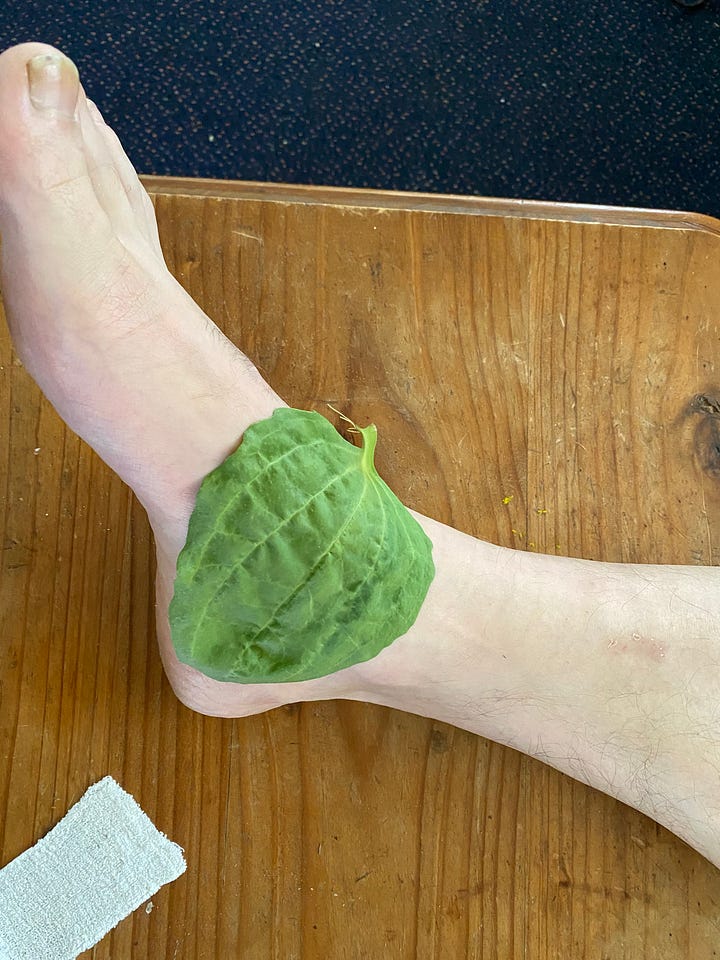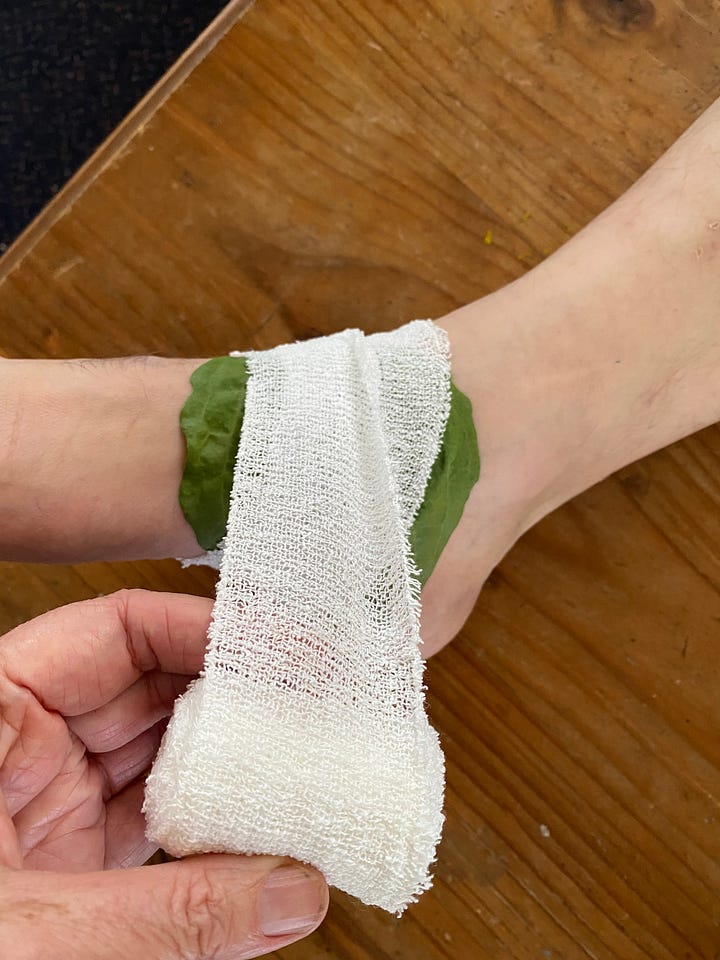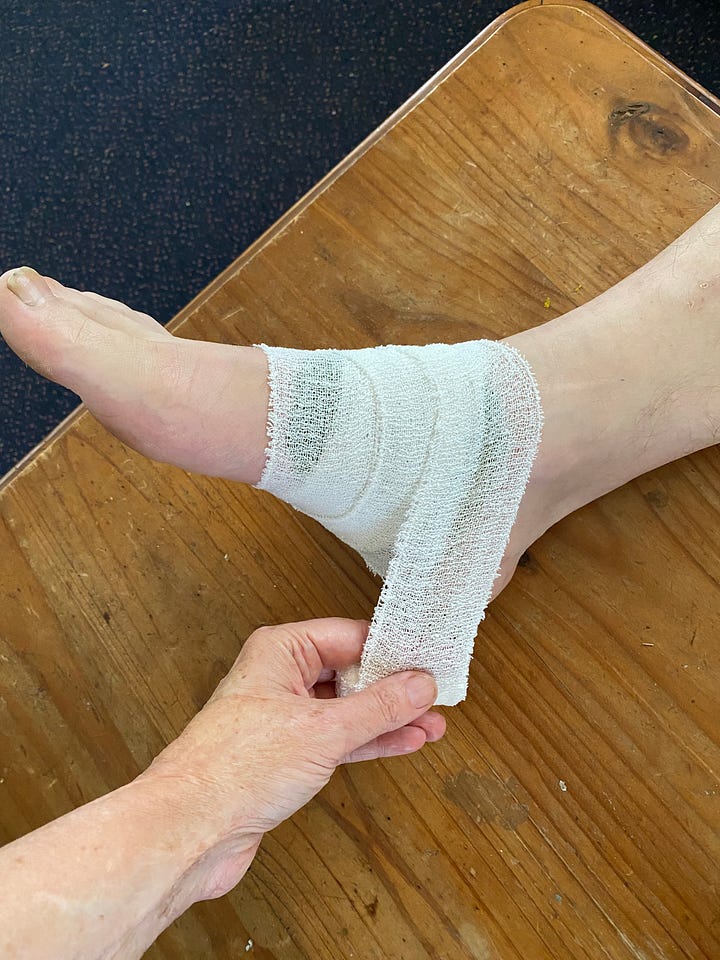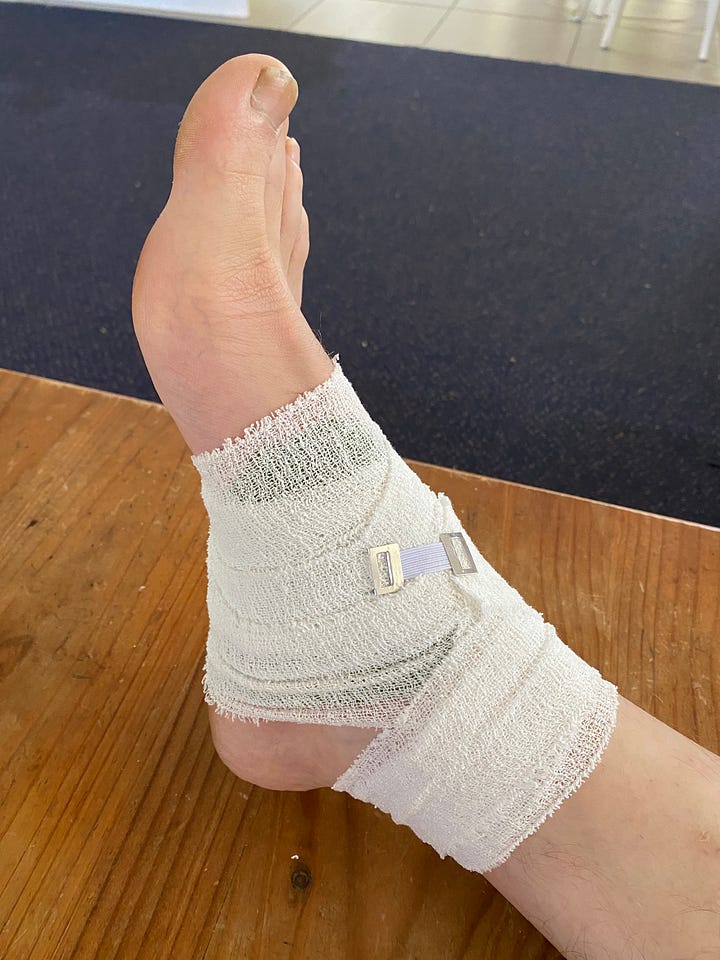Broadleaf Plantain Poultice for Wounds and Ulcers (the laying on of leaves)




Broadleaf Plantain can be used as a poultice by placing the plant directly on the skin. I was first inspired to try this after watching Juliette of the Herbs Documentary, about Juliette de Baïracli Levy who treated gangrene of the leg using geranium, nasturtium and mallow leaves. Her life and work is so simple, profound and beautiful and has been a wonderful inspiration to me.
When laying on leaves it is very important not to get dirt into the wound, so wash the leaves in sterilising salt water first. Air dry the leaves, then place the clean, dry leaves directly over the wound. To hold the poultice on, wrap a bandage around the leaves. Change the dressing daily. However, if the wound does begin to have red streaks coming from it, it means an infection has gone into the blood stream and needs medical attention. Of course, deep or serious wounds need immediate medical attention.
Ingredients
2-3 large, whole, clean plantain leaves washed in salty water
1 small bandage
Method
Place the fresh leaves over the wound or ulcer and bandage it. Leave it on overnight. Change the dressing every 12 hours using fresh leaves.
It’s a good idea to drink some of the plantain as a tea as well. (See teas on page _)
As with any wound that penetrates the skin, it is important to keep checking for infection. Signs of infection include redness, swelling, pus or watery fluid coming from the wound. If you notice any infection, start immediate antibiotic treatment. Take capsules internally and apply a topical antibiotic externally on the wound. If unsure seek medical advice.
Herbal Immunity Course starts next Tuesday.
If your still deciding if this course is right for you here is the course outline for our Building Immunity Course which starts Tuesday April 30th.
Across the 4 weeks, our guiding question is: how can we share what’s more relevant and practical for you.
Exactly what skills and info do you need to effectively and successfully care for common respiratory infections easily at home.
How do you know which herb to choose? How do you know which remedy to reach for when? What do I do if it’s not working?
If you’ve ever found yourself wondering about this, then I encourage you to join us, as we’ll be exploring these and have made lots of space for your questions and case studies.
Course Outline:
Week 1:
1. Foundational Concept: What is the immune system and holistic immunity?
2. Foundational Concept: What is Terrain Theory?
3. Phase 1: Strategies for Prevention, and how do you put it all together in your home
4. Featured Herb*: Shiitake
*In our weekly featured herbs, you’ll get to know this herb, how to use it, and when not to.
Week 2:
1. Phase 2: Acute Illness and case study* for upper respiratory (head cold, sinus infection, hayfever)
2. Featured Herb: Elder (with bonus Sage recording)
*Our case studies will come from the group if people have situations they want to work through
Week 3:
1. Phase 2: Acute Illness and case study. cold and flu – congestion, fever and aches and chills
2. Featured Herbs: Echinacea and Olive Leaf
Week 4:
1. Phase 3: recurrent illness, convalescence, lingering symptoms, not quite getting better and case study
2. Foundational Concept: Lifestyle pillars for Holistic Immunity
3. Featured Herb: Astragalus
Using the DIY Immunity Kit, you’ll get hands-on experience making these remedies as well (if you’ve got time – it’s all totally up to you how and when you pace the course) – and we encourage you to ask as many questions as you like about the remedy-making process.
We'll walk you through, step-by-step how to care for colds, flu, upper respiratory infections.
We want you to confidently know how to prevent winter sickness, and how to recover strong so you don’t have lingering symptoms or recurrent infection.
Hope you can join us
What’s happening on The Wild World Substack
For paid subscribers for the rest of 2024 I will be sharing The Wildcraft Series where we study one plant in depth over 4 weeks, looking at how to identify it, it’s herbal monograph (folklore, historical use, scientific use, indications and cautions) as well as recipes and how it can be used in everyday life.
Over the next month I will be covering Nodding Top (aka redflower, ragleaf)
I would like to acknowledge the Kabbi Kabbi/Gubbi Gubbi peoples on who’s lands I live and work. I acknowledge that sovereignty was never ceded and pray this truth be acknowledged and respected by all who live, work and govern these lands.





